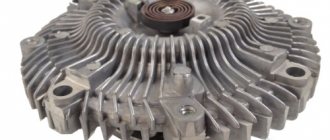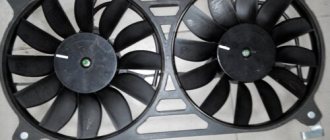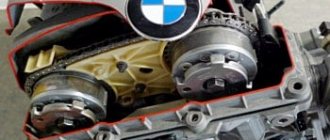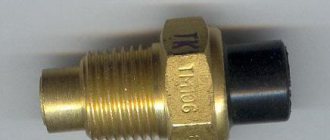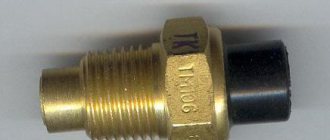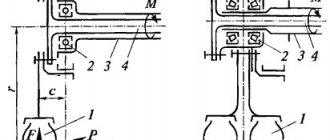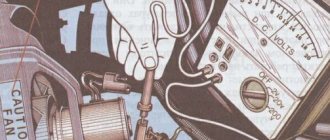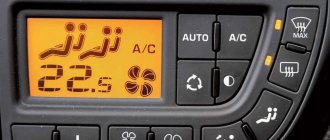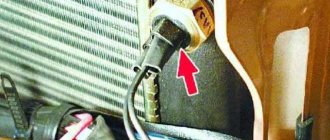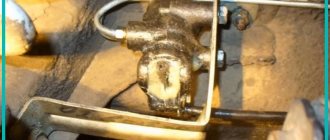How to remove a fan pulley on a ZMZ 409
To cool the radiator, a fan is used, driven from the engine crankshaft through a special clutch.
Under prolonged loads and elevated air temperatures, the performance of the impeller is not enough to remove heat. Find out how to install an electric fan on a UAZ Patriot instead of a viscous coupling.
Installing an electric fan on the UAZ Patriot instead of a viscous coupling allows you to increase the air flow drawn through the radiator honeycombs and improve the temperature parameters of the power unit under conditions of increased load.
Selection and replacement of couplings
As for replacement, you need to remove the old device and put a new one in its place, and then check its functionality. In practice, more difficulties arise not with the replacement itself, but with the selection of spare parts.
For replacement, it is important to select a viscous cooling fan coupling or drive connection coupling of proper quality. To do this, you will need to find out the code of the original spare part, after which you can determine the available analogues in catalogs. To accurately select a spare part, you will also need the vehicle’s VIN, make, model, year of manufacture, etc.
We also recommend reading the article about why the engine overheats. From this article you will learn about the main causes of engine overheating, as well as available diagnostic and repair methods.
Having figured out which part is needed, you should also pay attention to the manufacturer. Taking into account the fact that viscous couplings are produced by only a few companies, it is optimal to choose from the leading manufacturers: Hella, Mobis, Beru, Meyle, Febi. As a rule, the same manufacturers also produce other parts (cooling radiators, thermostats, suspension units, etc.).
The essence of the problem
The viscous coupling is a sealed housing filled with a viscous silicone-based working fluid. Inside the casing there are 2 disks with guide vanes; torque is transmitted by oil flows.
The characteristics of the liquid allow you to smoothly regulate the rotation speed of the output shaft and the fan impeller installed on it. The design ensures that the thermal regime of the motor is maintained at medium and high speeds.
When the engine speed drops to idle mode, the intensity of mixing of the working fluid in the clutch body decreases, which causes a decrease in the fan speed. A drop in air flow speed causes the radiator and engine jacket to overheat. The problem occurs when driving in long traffic jams or when driving on rough or swampy terrain at low speed.
An additional concern is the safety of the structure. In the center of the coupling there is a bimetallic plate that controls the bypass valve.
When the element is cooled (by the air flow from the radiator), the impeller rotates at low speed.
As the element warms up, the valve closes, and then the impeller accelerates sharply. At this point, there is a risk of injury to the driver servicing the engine. There have been cases of plastic impeller rupture (due to previous damage).
What is done in such cases?
Since fluid leaks from the coupling most often occur, let's talk about this first. To replenish it, you need to remove the viscous coupling from the water pump, and then start disassembling it. On the removed device, under the spring plate, there is a filler hole for working fluid. With the coupling removed, carefully pull out the pin and inject the missing amount of liquid with a syringe. Most often it is recommended to fill the clutch with transmission oil.
When replenishing fluid, place the coupling horizontally with the hole facing up. Approximately 10-15 ml is drawn into the syringe. liters of transmission oil and insert it into the filler hole without a needle. Squeeze out the liquid and wait for a while without removing the syringe from the hole. After this, wipe off excess oil from the surface of the coupling body and put the pin in its place. The product is ready for further use.
Viscous cooling fan coupling: where it is located and how it works
The fan rotation speed changes smoothly, steplessly; a fan with a viscous coupling never turns on and off instantly
In all-wheel drive transmissions of passenger vehicles with a longitudinal engine position, a standard viscous coupling performs the functions of an ersatz differential or a special locking element that complements a conventional differential. However, from a design point of view, the device is represented by a plurality of round driving and driven plate elements with projections and holes, which are located inside a completely waterproof housing filled with dilatant liquid.
The fan rotation speed depends on the heating of the engine: the more the viscous coupling is heated, the more the inlet channel opens, and the more liquid enters the working chamber.
In the absence or insignificant volume of automobile oil inside the working chamber, free rotation of the drive disk is observed. Only in the process of gradual warming up of the engine and increasing the temperature of the antifreeze does the bimetallic plate heat up and expand, which causes the opening of the intake valve system, penetration of the working fluid into the chamber and an increase in the speed of rotational movements of the ventilating impeller. As the adhesion coefficient decreases, the difference in the rotational speed of the housing and the viscous coupling drive shaft increases noticeably, which slows down the operation of the fan impeller.
Viscous coupling repair
If the engine begins to overheat, and the problem is related to the viscous coupling, you can try to repair it. The same applies to the drive connection coupling. The clutch is not officially repaired, the silicone fluid is not replaced, the bearing is not changed, etc.
However, in practice, it is quite possible to top up such fluid or replace the bearing, which often makes it possible to restore the functionality of the device. First you need to buy a suitable oil for the viscous coupling (can be original or an analogue) or a liquid for repairing universal type viscous couplings.
We also recommend reading the article on how to replace power steering fluid. From this article you will learn when to change the oil in the power steering, what kind of oil to fill in the power steering, and also how to do the replacement yourself.
Next you will need:
- Remove the clutch from the car;
- Disassemble the device;
- Lay the coupling horizontally and remove the pin under the plate with the spring;
- Find a hole to drain the liquid (if there is none, make it yourself);
- Using a syringe, pour about 15 ml of liquid into the coupling;
- The liquid is poured in small portions (the silicone should spread between the discs);
- Now the coupling can be assembled and put back;
If noise is heard when the viscous coupling operates, this indicates a bearing failure. To replace the viscous coupling bearing, the silicone fluid is first drained (then poured back in after replacement). Then the upper disk is removed, the bearing is removed with a puller, the flaring is ground off in parallel and a new bearing (closed type) is installed.
It is important to understand that you must be extremely careful when performing various operations. For example, even a slight deformation of the clutch disk will lead to complete failure of the device. Also, do not allow dust or dirt to get inside the device, do not remove special grease, etc.
How to check a viscous coupling (using the example of UAZ Patriot)
The engine cooling system of the UAZ Patriot is equipped with a standard viscous coupling with a fan. This device provides reliable protection against overheating by turning on when the engine temperature goes beyond the established operating parameters. The viscous coupling does not have a rigid connection to the crankshaft, and starting a cold engine causes it to rotate at low speed.
It is very difficult to independently diagnose a breakdown of a viscous coupling in normal mode, but there are several ways to easily verify the functionality of such a device. To check the viscous coupling of the UAZ Patriot cooling fan, you should take a closer look at the speed of the mechanism when the engine is turned on, cold and warm.
Checking the cooling fan
It is not always possible to use the car regularly, so it ends up in a state of downtime. At this time, the viscous coupling requires checking its performance. This will also help prevent damage from wear and tear.
Recognizing a malfunction is not easy under normal conditions, but there are methods for checking the viscous coupling of a fan. To inspect the mechanism, you need to check the speed of the product with the engine turned on, warm and cold. When the engine is cooled, there should be no extraneous sounds, and the speed should be normal. A hot engine can often provoke various noises and irregularities in the speed.
Such problems can arise due to faulty bearings or untimely oil changes. Also, sealed seals and leakage of silicone fluid can cause failure.
Solving the problem yourself
If defects in operation are found, the viscous coupling does not always have to be replaced. These problems can often be solved on your own. One of the most common problems encountered with this device is silicone fluid leakage. To make up for the deficiency, you need to do the following:
- Disassemble the viscous coupling by removing it from the water pump.
- It's worth taking a closer look at the product's disk. On its surface there is a special plate with a spring, under which there is a hole for silicone. It is necessary to remove the pin with extreme caution and pour lubricant inside using a special syringe. During this process, the part itself must be placed in a horizontal position.
- It will be enough to pour 15 milliliters of liquid into the syringe.
- You need to wait a few minutes until the substance flows into the viscous coupling without removing the syringe.
- After checking that the procedure was performed correctly and that there is no excess silicone, the part can be installed back.
For those who do not consider themselves experienced motorists, it is better not to engage in such work, because this can cause complete breakdown of the device. Typically, the biggest challenge is putting everything back together.
Other problems
Bearings can often cause failure of a viscous coupling. This is evidenced by the appearance of unusual noises in the cooling zone. But you can also repair it yourself:
- To repair the product, it must be removed from the main motor structure. To do this, unscrew the 3 bolts on which the bearings are attached.
- These elements should be replaced only after the oil fluid has been drained and the unit has been disassembled. To simplify the process, you can use a special tool - a puller. You should not use improvised devices, as they can permanently damage the parts.
- After installing the bearing, you can install the entire device into the motor mechanisms. Before this, you need to fill in fresh silicone, which was drained before replacing parts.
Note: incorrect behavior of parts does not always require their immediate replacement. Often you can get by with simple repairs that do not require special skills.
A common problem when checking a viscous coupling or replacing bearings is finding the right tool. Such a puller is not always easy to find in a car dealership, so repairs can be difficult.
About the electric fan
The electric fan covers all the disadvantages that the viscous coupling had. After installing it, it will be difficult not to notice the following improvements:
From the factory, on a UAZ Patriot with air conditioning, a so-called “sparka” is installed in front of the air conditioner radiator (on the street side) - two electric fans in a plastic case. But they have little effect on the main radiator, and besides, they make a lot of noise. Therefore, if you have already decided to install electric fans instead of a viscous coupling, you can safely remove them.
Installation process
To install an electric fan, it is not at all necessary to visit a service center; everything can be done independently at home. First of all, it is necessary to select or manufacture a base for electric fans (frame or “screen”) that matches the size of the engine cooling radiator.
Pros and cons of viscous coupling
Let's start with the disadvantages, because it is because of them that owners prefer to install electric fans on the UAZ Patriot instead of a viscous coupling. And the most significant disadvantage, perhaps, is poor engine airflow at low speeds - for example, in traffic jams or when driving over rough terrain at low speed. After all, the efficiency of a viscous coupling directly depends on these very revolutions.
Besides this, there are other disadvantages:
- Additional load on the engine. The viscous coupling takes away part of the engine power, this is especially noticeable when overtaking on the highway, when the operating speed is almost in the red zone of the tachometer. Acoustic comfort also suffers - a characteristic noise and howl appears.
- There is no way to force the fan to turn on at full power, for example, in the same traffic jams.
- The clutch makes it difficult to access the idler rollers and drive belts, which significantly complicates and increases the time spent on repairs.
- There is a danger of fan blades coming off at high speeds, as well as the risk of damage to the main radiator from flying fan fragments, which may require expensive repairs with a complete replacement of antifreeze/antifreeze. Now imagine that this could happen on the highway, somewhere far from home.
- Cannot be repaired. The faulty clutch is replaced with a new one, although you can try drilling a few holes and fixing it with bolts so that it always rotates. But this repair method is only suitable for summer; in winter, the engine will take a very long time to warm up.
- A simple and fairly reliable design that can work for years without any maintenance.
- It is installed on the UAZ Patriot from the factory, so you will not have to modify anything if it is replaced.
- Does not create a load on the electrical part of the car.
As you can see, the viscous coupling has more disadvantages, so many Patriot owners eventually come to the idea of replacing it with electric fans.
DIY troubleshooting
Standard disassembly of a viscous coupling involves removing the device, dismantling the impeller, unscrewing a pair of mounting pins, draining the working fluid, thoroughly washing the inside with gasoline and drying it. After filling with new PMS-10000 silicone oil, the device is mounted back.
To troubleshoot a viscous coupling or replace it, you must first remove the device:
- Remove the fan casing by removing the pins and spacer clips.
To make the key fit, its ends can be sharpened with a grinder
You need to press the belt between the temple pulley and the power steering pulley
Insert the key from above between the two blades
If the cause of incorrect operation of the viscous coupling is a leak of silicone liquid from the base, then the following actions are performed:
If there is a variety of unusual noise in the cooling radiator, the bearing will need to be replaced. For this purpose, it is necessary to drain the oil and disassemble the assembly using a special puller. After installing the new bearing, the device is mounted in the reverse order, after which new silicone fluid is poured.
A special automotive device - a viscous coupling that rotates the cooling fan using liquid - quite often fails. It is possible to fix only the simplest breakdowns on your own, so in the most difficult cases you need to contact a service center with auto mechanics who specialize in working with these types of devices.
How to remove viscous coupling
Usually, the viscous coupling from a UAZ Patriot car is not difficult to remove, although if the device has not been removed for a long time and the bolts have become sour, a hammer may be needed. So, the sequence of actions is as follows:
- First, remove the fan casing (diffuser). Using a small flat head screwdriver, remove the spacer clip pins located on the top of the diffuser and remove the clips. After this, the casing is removed from the engine compartment through the top.
- The nut securing the fan to the pump hub is unscrewed. Here you can’t do without a 32 open-end wrench. Attention, the nut has a left-hand thread, that is, you need to unscrew it to the right (if you look at the front of the car).
- Be sure to secure the drive belt by pressing it with your hand in the gap between the temple pulley and the power steering pulley. Otherwise, you will not be able to unscrew the nut. If even after this the nut does not unscrew, try to break it off with sharp blows on the wrench with a hammer.
- Unscrew the nut a little and, holding it with a wrench, rotate the fan impeller to dismantle it. Keep in mind that the fan weighs a lot, so do everything carefully.
- Remove the fan and remove the viscous coupling by unscrewing the four mounting bolts around the perimeter.
Electric Fan Installation
Replacing viscous couplings with electric fans begins with purchasing or making your own metal support frame for electric motors, which is then placed on the inside of the radiator.
On some vehicles equipped with an air conditioning system, an additional air conditioning heat exchanger with electric fans (installed on the outside of the radiator) is used. It is not recommended to remove the elements as they are controlled by the air conditioning controller to keep the air inside the vehicle cool.
For cooling, 2 fans from the Gazelle or from the “classic” VAZ models are used. When purchasing an impeller, you should consider the direction of air flow created by the blades. Additionally, it is necessary to replace the sensor in the thermostat housing, which activates the operation of the electric motors.
There are several types of sensors that are triggered at a liquid temperature of +87...+97°C. An additional toggle switch for manually turning on the engines is located in the car interior (on the dashboard or center console between the seats).
It is allowed to use fan units from Nissan X-Trail SUVs, which are equipped with a 4-channel patch cable. The devices are connected to the power unit control controller and to a temperature sensor (with a response threshold increased to +95...+97°C).
Installing an electric fan is very simple.
The signal from the control unit turns on the impellers with an operating capacity of 40% of the maximum value. With a further increase in temperature, a sensor located in the thermostat housing is triggered, allowing the fans to be switched to maximum air supply.
There have been cases of using a fan from Hover (catalog number 1308100K00V1), which is equipped with additional resistance to obtain 2 speeds of rotation of the impeller. The product is supplied with a plastic frame, which is installed on the UAZ Patriot radiator with minor modifications.
Before installation, you will need to cut down 2 support brackets, which are placed on the lower edge of the plastic diffuser. For mounting, standard holes on the radiator are used, intended for installing the original guide casing.
DIY UAZ Patriot repair: replacing the radiator and viscous coupling
May 27, 2020
A UAZ Patriot with a mileage of about 130,000 km fell into the hands of the Carville Repair School. UAZ Patriot is an off-road vehicle. Our car is a 2006 and is prone to overheating.
Its owner tried to solve this problem by installing Niva fans in front of the main radiator, everything is held on by clamps, and the temperature sensor is wrapped in a plastic case and has no grounding, the wires are not secured - all this needs to be fixed urgently! Based on the diagnostic results, it was decided to change the cooling radiator, viscous coupling and electric cooling fan.
What you need for repairs
We need:
1) Cooling radiator LUZAR (art. LRc 0360b)
2) Viscous coupling assembly with LUZAR impeller (art. LVC 0362)
3) Electric cooling fan without casing LUZAR (art. LFC 0360)
4) AIRLINE tool set - Open-end wrench 10 and 13 - Ratchet and heads 17 and 13 - Slotted screwdriver - Open-end wrench 32
Spare parts for UAZ Patriot - https://carvilleshop.ru
Tools - https://carvilleshop.ru/catalogue/instrumenty/
Preparing to remove the radiator
On this car, the viscous coupling of the fan drive is completely welded, the fan blades are iron: the fan is not capable of cooling the radiator, such a spare part will not work correctly, it only makes extraneous noise.
First you need to lift the car on a lift, and then remove the protective boot. On this car, the protection was bent and the technician could not reach the bolts; it had to be straightened first.
To drain the antifreeze, you need to unscrew the plastic plug from the radiator. To avoid getting wet, you need to immediately prepare a piece of rag and a container into which the coolant will be drained. The antifreeze will first saturate the rag and then flow down it into the container. After the main part of the antifreeze has already been drained from the radiator, some of the liquid still remains in the pipes - it can also splash.
The radiator is secured from below with two bolts through rubber pads to the frame itself: they need to be unscrewed. All that remains is to remove the top pipe.
We completely freed the radiator, but we can’t remove it - the fan is in the way, its diffuser rests on the fan impeller, we’ll have to remove the fan first.
Removing the electric fan
We need an open-end wrench size 32. The electric fan is attached through a nut, and to unscrew it you will need to press on the belt to prevent the pulley from turning. Here the nut has a left-hand thread; you need to unscrew it clockwise.
We removed the old fan from the car, the viscosity coupling is welded and the blades are bent. Old viscous couplings liquefied at high temperatures: the liquid inside could not cope with the transmission of torque, became too liquid, and the fan slipped without blowing the radiator.
Radiator assembly
To replace the old fan, we will install an 11-blade LUZAR fan: it has a modified viscous coupling with a larger diameter, better cooling, and the liquid inside at high temperatures still transmits torque, the blades do not slip and the fan cools the radiator much more efficiently.
Now you can completely remove the radiator. There is damage on our radiator, and it is also clogged with dirt. Although it is not leaking yet, we will replace it with a new one. We will move the diffuser from the old radiator to the new one, install a new electric fan, and install the assembled radiator in the car.
We assemble the electric fan according to the instructions and attach it to the radiator.
Radiator installation
The radiator is completely assembled, all that remains is to install it in the car and secure it.
After the radiator is placed inside the car, you need to tighten two bolts from below and secure them, put on the lower pipe, and then install the protection. After tightening the lower radiator mounting bolts, you need to install the viscous coupling, and only then secure the radiator from above.
Now you need to adjust the gap between the diffuser and the fan: it should be the same over the entire rotation diameter of the fan. If the gap is different, you need to move the casing relative to the fan itself, and fix the shifted casing.
Fill the cooling system with antifreeze recommended by the manufacturer for your car model. After installing our spare parts, the noise when the car is running has decreased significantly, the engine runs smoothly.
Checking the sensors
We check the circuit of the engine critical temperature sensor: the radiator tank is made of plastic, you need to make a grounding contact. To check, you need to turn on the ignition and bridge the central wire with the sensor housing. A warning will appear on the instrument panel display.
Next, check the control circuit for the additional electric radiator cooling fan. These fans are controlled by the engine control unit itself based on a signal from the temperature sensor, which is located on the thermostat housing.
The sensor is two-contact and it works according to the following scheme: the control unit supplies a reference voltage to this sensor, the sensor changes its internal resistance, thereby changing the voltage at the sensor contacts.
To check you need a potentiometer and a multimeter. The maximum resistance on the potentiometer should be 10 kOhm.
We have two pins that we insert into the sensor connector, and two pins that need to be put on the device to measure voltage. We soldered the ends of the wires to make it easier to insert them into the sensor connector. After this, we put the connector into the measuring device and turn on the car’s ignition.
By gradually tightening the potentiometer handle, we change the voltage in the circuit and catch the moment when the fan turns on and off. The multimeter readings need to be compared with the readings in the table - if they correspond to the norm, then everything is working correctly.
Repairs must be of high quality
Do not use homemade methods to solve problems in the car’s cooling system - make repairs with high-quality and proven spare parts, and then everything will work for a long time and without unpleasant surprises.
In the next issues we will continue repairing the UAZ Patriot car.
Full range of products at https://carvilleshop.ru
Read us on Yandex.Zen
Our Telegram channel https://t.me/carvilleru
Download our application for IOS and Android - the entire product catalog in your smartphone
Listen to the sound of the fan before/after and see the whole process of diagnosing and replacing spare parts yourself - in the video of the Carville Repair School:
Source: https://carvilleshop.ru/pokupatelyam/news/remont-avto-svoimi-rukami-zamena-radiatora-i-viskomufty-na-uaz-patriot/
Installing an electric fan on a UAZ Bukhanka
The clutch allows you to reduce fuel consumption, reduce fan noise, and promotes better warm-up of a cold engine.
The viscous clutch is removed if it malfunctions, if the clutch does not turn on or does not turn on completely.
You will need a 32 key.
View of the viscous coupling assembled with the fan
To make it easier to unscrew the coupling, unscrew one pin
Unscrew the coupling shaft from the fan drive hub
Please note that the connection between the coupling and the hub has a left-hand thread
Remove the viscous coupling assembly with the fan
Unscrew the four nuts securing the fan to the coupling
Remove the fan from the coupling
Install the fan and clutch in reverse order
UAZ Patriot - viscous coupling replacement
In the UAZ Patriot there is an element called a “viscous coupling” or, as it is sometimes called, a “fluid coupling” - on which the fan is located. It is needed to protect against overheating and is activated only in this case, when the motor temperature begins to go beyond the operating limits.
The viscous coupling on the UAZ Patriot is designed in such a way that it is connected to the engine crankshaft not directly, but through special disks, between which there is a working fluid. When starting a cool engine, the viscous coupling rotates at a very low speed, even lower than the number of engine revolutions.
Then, as the engine warms up, the iron plate in the front part of the viscous coupling heats up from the radiator and bends outward, which releases a special ball that closes the hole in the inner disk. It turns out that the working water has nowhere else to go and remains between the disks.
Replacing the viscous coupling bearing
To determine if the bearing needs to be replaced, remove the auxiliary belt. Turn the fan. If the viscous coupling moves, replace only the gasket. If the pulley moves, then it's time to change the bearing.
To remove the bearing, first remove the viscous coupling. After removing the component you will see the front ring. Take it off. Place one washer on the 5-inch bolt and slide it to the back of the bearing. Place the pipe coupling on the other side. Place the flange over the coupling with the raised part inside. Make sure the socket you use on the nut will fit inside. Place one washer on the bolt followed by the socket. Then put on a small washer and nut.
If a bolt is crooked, stop and straighten it. Attach the bolt and begin tightening. The bearing housing will be clogged. Clean it as best you can. Now place a 4-inch bolt into the back of the new bearing, followed by a washer. Place the nut and press it lightly. Make sure it is facing the correct direction. Warm up the case. Without a bearing, it will heat up quickly. Wear leather gloves. Insert the bearing into the groove.
Service
Maintenance of power units of all types for the “Loaf” is given in the same way. All these engines were developed on the basis of the legendary ZMZ 402, and therefore the maintenance for them is approximately the same.
For representatives of UMZ 417 and 421, engine maintenance is carried out almost similarly. Thus, scheduled maintenance is carried out every 15,000 km. Maintenance includes changing the oil and filter. To change the oil, you will have to unscrew the drain plug and wait for the lubricant to drain. Then, the plug is screwed in and oil is poured through the filler neck. The oil filter is changed when there is no oil in the engine.
Maintenance also includes checking all systems for oil leaks and malfunctions. Every 30,000 km the valves must be adjusted, and every 20,000 km the air filter element must be replaced.
Purpose and role of the fan drive fluid coupling in the cooling system
The viscous coupling is a simple and reliable solution that significantly simplifies the design of the fan drive, allowing the elimination of many parts. The viscous coupling is a single compact unit through which the fan impeller is connected to the water pump pulley; this unit does not require any electrical connections or connection to control elements, and operates independently from other engine parts.
The fluid coupling performs one function - changing the rotation speed of the cooling fan impeller depending on the engine temperature. This is achieved by the fact that when heated, the coupling increases the transmission of torque from the pump to the fan impeller, and when cooled, it reduces the flow of torque. Moreover, the fan rotation speed changes smoothly, steplessly; instantaneous switching on and off of a fan with a viscous coupling never occurs.
The viscous coupling is mounted directly onto the water pump drive pulley using a flange, and the fan impeller is attached to the coupling housing. Therefore, the viscous coupling always rotates with the pump pulley, regardless of the current engine temperature.
Fluid coupling has a number of advantages over other types of fan drive, which are especially important for off-road vehicles operated in difficult conditions. For example, the use of a viscous coupling minimizes the role of the blinds in front of the cooling radiator, although in UAZ vehicles with a permanent fan drive the driver constantly has to control the blinds.
Also, in engines with a fluid coupling, there is no need to turn off the fan or remove the belt when overcoming fords - when entering the water, the viscous coupling cools down and turns off the fan. Also, the fan stops rotating due to increased resistance of the medium, but if in the case of direct drive or electric drive, forced braking of the fan impeller is fraught with belt wear and breakage, then for the viscous coupling this is not at all dangerous.
The essence of the problem
Let's start with the fact that the engineer of the Ulyanovsk Automobile Plant equips UAZ Patriot SUVs with radiator cooling fans, which are driven by a viscous coupling.
A viscous coupling is a mechanism presented in the form of two flat disks. Viscous coupling allows you to transmit torque using a special silicone-based fluid.
The operating principle consists of several plates mounted on the driven and drive shafts. They rotate in a container with liquid, which changes its properties when heated. When the liquid is mixed while the drive shaft rotates, it changes its properties (expands) and thereby creates pressure in the chamber. As a result, the disks of the driven shaft engage, causing it to move.
How the device works
It was invented in the USA in 1917 by engineer Melvin Severn. This product did not immediately find its application, so it was not recognized for a long time. In 1964, a viscous coupling was installed in the Interceptor FF, where it acted as an automatic differential lock. Only in 1965 did this mechanism take its place in the engine.
A viscous coupling is a device that is responsible for rotating a special fan that cools the system thanks to a special liquid. It looks like a round mechanism made of a silicone base and filled with a lubricant. The viscous coupling ensures smooth fan control.
There are flat disks inside the product body. Some of them are connected to the drive shaft, while others are connected to the driven shaft. There are various protrusions and holes on their surface. Design features place these elements in close proximity to each other. The silicone liquid located inside tends to thicken with strong stirring. It also expands when heated, so it creates a lot of pressure on the disks when the engine is running and compresses them together.
Features of the mechanism
At first glance, the operating principle of a viscous cooling fan coupling seems complicated, but it is not. The movable crankshaft is driven into rotation and transfers its energy to the clutch. This makes its silicone base softer and more viscous. The clutch begins to block, causing the second disk with the fan to rotate.
Almost every engine has a viscous coupling. This is due to the importance of its functions and the quality of the device, because it is at a fairly high level. The viscous coupling has an excellent safety mechanism: when a person, through his own negligence, puts his hand into the moving element, he will stop to prevent injury.
Key for removing viscous coupling on UAZ Patriot ZMZ 409
Key for removing viscous coupling on UAZ Patriot ZMZ 409
Post by lexmak » May 28, 2022, 02:51 pm
Any factory key for 32 with a thickness of no more than 9 mm. Found in nature.
Well, that's all.
Key for removing viscous coupling on UAZ Patriot ZMZ 409
Post by igorstrong » 06 Jun 2022, 07:30
Key for removing viscous coupling on UAZ Patriot ZMZ 409
Post by lexmak » 06 Jun 2022, 17:49
Where are viscous couplings used?
Viscous couplings are used as a center differential in some four-wheel drive (4WD) vehicles such as the Toyota Celica GT-Four, and also as a limited slip differential (LSD) on rear axles. These units offer a cheaper way to implement all-wheel drive than the mechanically shifting Torsen differentials used by Audi.
Viscous coupling for Rolls Royce & Bentley
Volvo, Subaru, Land Rover, Vauxhall/Opel and many other brands used viscous couplings in their drives in the early stages of development. They are now being replaced by electronic devices.
Removing the viscous coupling
The sequence of actions when removing the viscous coupling from the ZMZ-409 gasoline power unit installed on a UAZ Patriot:
- Remove the guide diffuser located around the impeller. To secure the assembly, spacer clips are used, which are removed with the tip of a flat-head screwdriver. The deflector housing is removed upwards from the gap between the engine and radiator.
- To remove the impeller you will need a 32 mm wrench. It is possible to use a standard spanner or socket. Since the nut has a left-hand thread (to increase safety during operation), the tool rotates to the right (when viewed from the radiator of the car). To prevent the clutch from spinning, you need to press the poly V-belt by hand (into the gap between the clutch pulley and the drive wheel of the hydraulic power steering pump).
- Unscrew the impeller using a wrench or manually. Since the element is heavy, it is important not to drop the part into the gap between the engine and the radiator. If dropped, the radiator tubes may be damaged by the sharp blades of the impeller.
- It is possible to remove the coupling together with the front cover of the ZMZ-409 engine, which is attached to the front of the block and the head cover with 6 bolts. Instead of a standard part, an aluminum panel from the ZMZ-406 engine is installed, which is distinguished by the absence of fastening points for the viscous coupling. During installation, it is necessary to replace the gaskets and wipe the mating surfaces from any remaining engine oil. The bolts are tightened in the sequence specified in the power unit repair instructions.
The device of the fluid coupling (viscous coupling) of the UAZ fan drive
UAZ vehicles use viscous couplings with a two-stage control system. Such couplings have a slightly more complex design than single-chamber viscous couplings of earlier releases, but they provide better fan performance and prevent some negative effects. Couplings of different models have a fundamentally identical design, differing only in some details. Therefore, we will consider here the general structure of the viscous coupling of UAZ cars.
The basis of the coupling consists of two parts: the housing and the rotor located inside it. The rotor is installed inside the housing through bearings on the rotor shaft; the shaft itself goes into a flange, with the help of which the fisc coupling is mounted on the water pump pulley. The rotor divides the internal space of the housing into two cavities, which, in turn, are also divided into two chambers by special plates (intermediate washers, they are rigidly connected to the housing). As a result, four cavities are formed inside the coupling: two working chambers located on both sides of the rotor, and two reservoirs located on the opposite sides of the plates.
On the side of the working chambers, the rotor and washers are equipped with annular ribs, which greatly increase the surface area of the chambers and increase the efficiency of the coupling. In essence, working chambers are “labyrinths” of cavities in which working fluid circulates. This solution makes it possible to abandon the use of a package of friction discs and simplify the design of the viscous coupling.
The front washer has four inlet channels located on opposite sides. One channel on each side is connected to the front working chamber, the second - to the rear working chamber. Moreover, windows are made in the rotor to supply liquid to the rear working chamber. In the coupling body or between the front plate and the body there are bypass (return) channels that supply fluid from the working chambers to the front reservoir.
The inlet channels are closed with a wide bimetallic plate, which is pressed against the front washer. A pin is passed through the center of the front wall of the coupling body, which holds the bimetallic plate, and on the outside is connected to a spiral bimetallic spring. The bimetallic spring is rigidly connected to the bimetallic plate through a pin, and the plate together with the pin can rotate through a certain angle, opening or closing the inlet channels.
However, when the bimetallic plate is rotated, only one of the inlet channels opens; the second channel opens at a higher temperature due to the bending of the bimetallic plate. Thus, the inlet channels and the bimetallic plate form a valve system that opens and closes depending on the temperature of the coupling.
At the end of the rotor there are oblique teeth (rim gear), which play the role of a pump for pumping working fluid from the working chambers to the front reservoir.
The coupling body is usually made of aluminum alloy, which has high thermal conductivity. On the outside, the housing has fins that increase the surface area of the coupling. Both of these solutions are aimed at reducing the thermal inertia of the viscous coupling - thanks to the heat-conducting material and a developed system of fins, the coupling heats up and cools down faster, ensuring a change in fan speed with minimal lag behind changes in engine temperature.
In the front part of the coupling body there are studs for mounting the impeller, and the studs also cover the holes through which the working fluid is poured into the fluid coupling cavity. Viscous couplings assembled with an impeller are also on sale. Sometimes it makes sense to buy just such a coupling, since today in UAZs plastic fans are more often used, and their service life is noticeably lower than that of metal fans of the old design.
Operating principle of viscous coupling
The operation of a viscous coupling is based on simple principles, one of which is contained in its name: the transmission of torque from the rotor to the housing is ensured by the viscosity of the working fluid. And the clutch control is provided by two sensitive elements - a bimetallic spiral spring and a bimetallic plate. When the temperature changes, the bimetallic spring unwinds and twists, ensuring rotation of the bimetallic plate attached to the pin. In turn, the bimetallic plate bends or straightens when the temperature changes, opening and closing the channels.
When the engine is cold (immediately after starting), the viscous coupling is at a low temperature, the spring is at its minimum length, the bimetal plate is pressed against the index plate, and the intake ports are closed. In this case, the clutch rotor rotates freely and, due to centrifugal forces and teeth at the end, holds the working fluid in the reservoir. Thus, the working chambers remain empty, and the torque from the rotor is not transmitted to the housing. Although in this case the fan rotates at a low speed, since there is some friction in the bearings.
